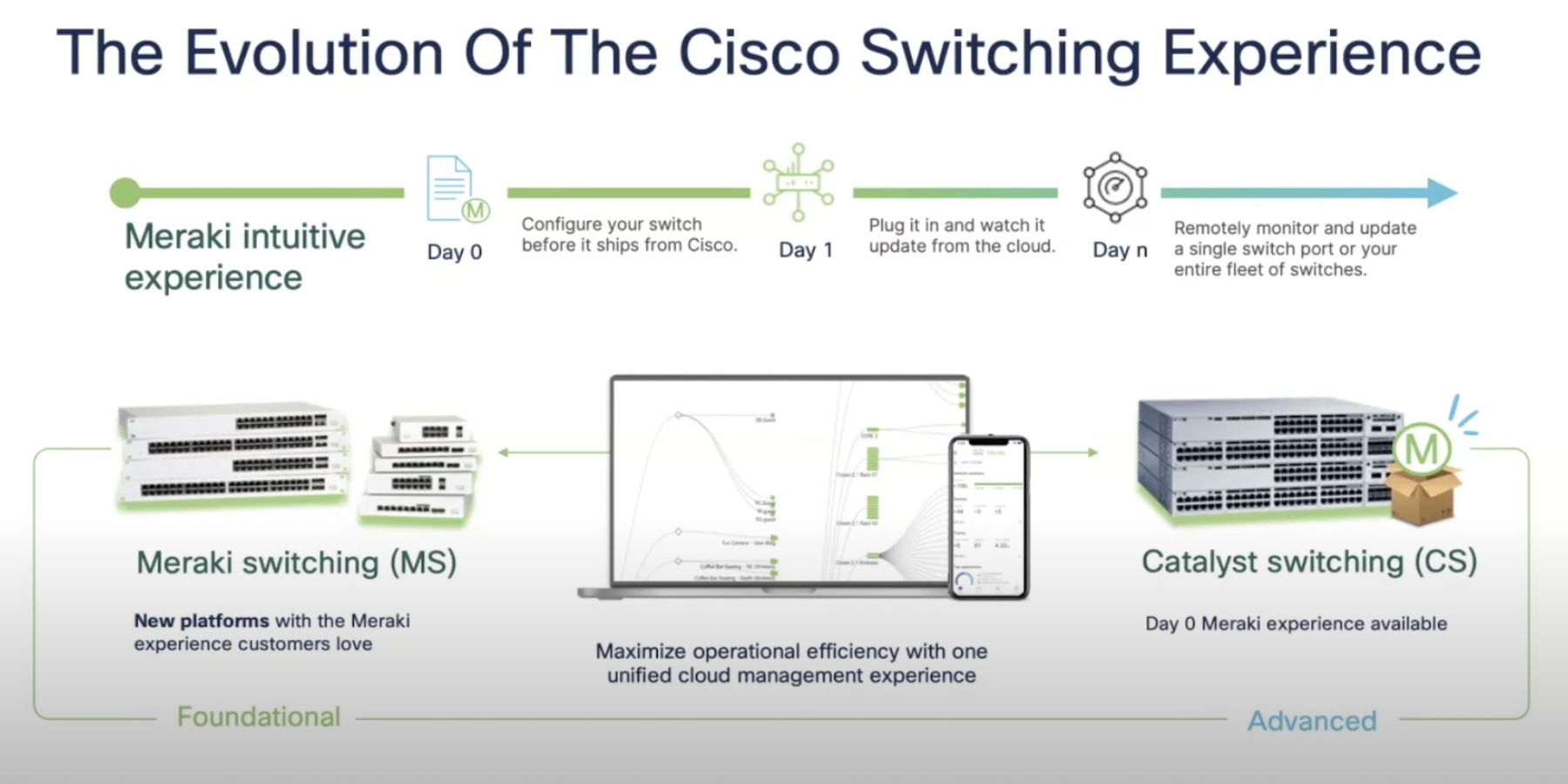The Meraki platform makes end-to-end management, and security of distributed networks child’s play. But for the most part, Meraki’s intuitive experience has been missing from the Cisco’s Catalyst line of switches. Known for their robust capability to power intensive use cases, the Catalyst switching lacks the Day 0 configurability and the plug-and-play simplicity of the Meraki line.
As the world leans towards a unified experience in the cloud, Cisco is merging the two lines to make the legendary Meraki experience a part of the Catalyst portfolio. During Cisco’s appearance at the recent Networking Field Day event, they demoed the new Catalyst Meraki 9300 series that provides Cisco-level performance with Meraki’s signature user experience.
The Meraki Experience
With the Meraki platform, Cisco has scored a laudable goal. For years, it has offered users a holistic experience with a set of user-focused management capabilities that enables a resilient network infrastructure capable of delivering high quality of user experience. The platform has unlocked high levels of operational efficiency, significantly reducing downtime and operational costs for many. It’s little surprise that the Meraki product line has gained such popularity and market share.
Now Cisco is tapping into Meraki’s agile management to evolve its switching experience. “Cisco and Meraki are not so much separate entities anymore. You’ll see examples of these working together more and more as time goes on,” said Sr. Technical Marketing Engineer, Brennan Martin. “We’re starting to see the benefits of leveraging the Cisco portfolio. They have an incredible hardware legacy,” he added.
Catalyst Switches that Behave like Meraki
With the release of Catalyst 9300-M, Cisco embraces a unified approach bringing the Catalyst and Meraki switching lines together. “We’ve had this idea a while now about being able to migrate some Catalyst switches. So the idea is, if you’ve already got a Catalyst switch, and you’re still using your console cable or bootstrapping that device yourself, converting it into the Meraki mode makes it manageable in the Meraki dashboard,” Martin said.
Cisco allows all Catalyst switches to be migrated to the Meraki mode as both the lines run on Cisco’s IOS XE. “We’re running the same code the whole time. It’s really about getting connected to the Meraki dashboard in a way that we can support all of the Meraki features that the Catalyst could do. We can’t do certain things in the dashboard, but things like cloud monitoring maybe a better use case where you can still have the switch in the Meraki dashboard and monitor it, but have full access to the CLI to leverage everything in the kitchen sink that IOS XE can do.”
What does the Meraki mode feel like? The short answer is a highly intuitive experience that includes built-in Day 0 features like configuration before shipping, plug-and-play installation, remote monitoring and holistic cloud management. The Cisco Catalyst 9300-M incorporates all of these features into the Catalyst hardware.
Who is it for? “This is for customers who love and know Catalyst switching, and rely on it for their most demanding use cases, but want the Meraki experience,” answered Martin.
As opposed to migrating a Catalyst switch to Meraki, the Catalyst 9300-M can be ordered in the Meraki mode from get-go. “You can actually order these straight from Cisco in Meraki mode right off the bat and get that full experience from start to finish,” said Martin.
One of the key features of the Catalyst 9300-M is Adaptive Policy that allows operators to secure the network traffic through easy segmentation. With Adaptive Policy, network traffic to be segregated into individual Security Groups. Permit or deny between the groups can then be defined on the Meraki Dashboard.

As of today, the Catalyst Meraki 9300 series comprises three classes of products – Gigabit, Multigig, and Fiber Aggregation. Both the Gigabit and multigig SKUs are shipping currently, and the Fiber Aggregation line is targeted to roll out early this year.
“All of the bits and pieces that come with the 9300 series of accessories now are supported in Meraki dashboard. Here is a whole bunch of new flexibility and options to get the Meraki experience with way more hardware than we had before,” he said.
Wrapping Up
With the Catalyst Meraki 9300 series, Cisco has taken big leaps towards merging the solutions and jumpstarting a transformation that will only enable businesses to power highly demanding use cases with simplicity and efficiency. For any Cisco users who have been longing to get the Meraki experience on their Catalyst switches, it is a no-brainer.
But does the Catalyst 9300-M mark the end of Meraki line? Absolutely not, says Martin. Because next in line is the Meraki MS130 switches. Watch the demo and other presentations by Cisco from the Networking Field Day event at the Tech Field Day website.

